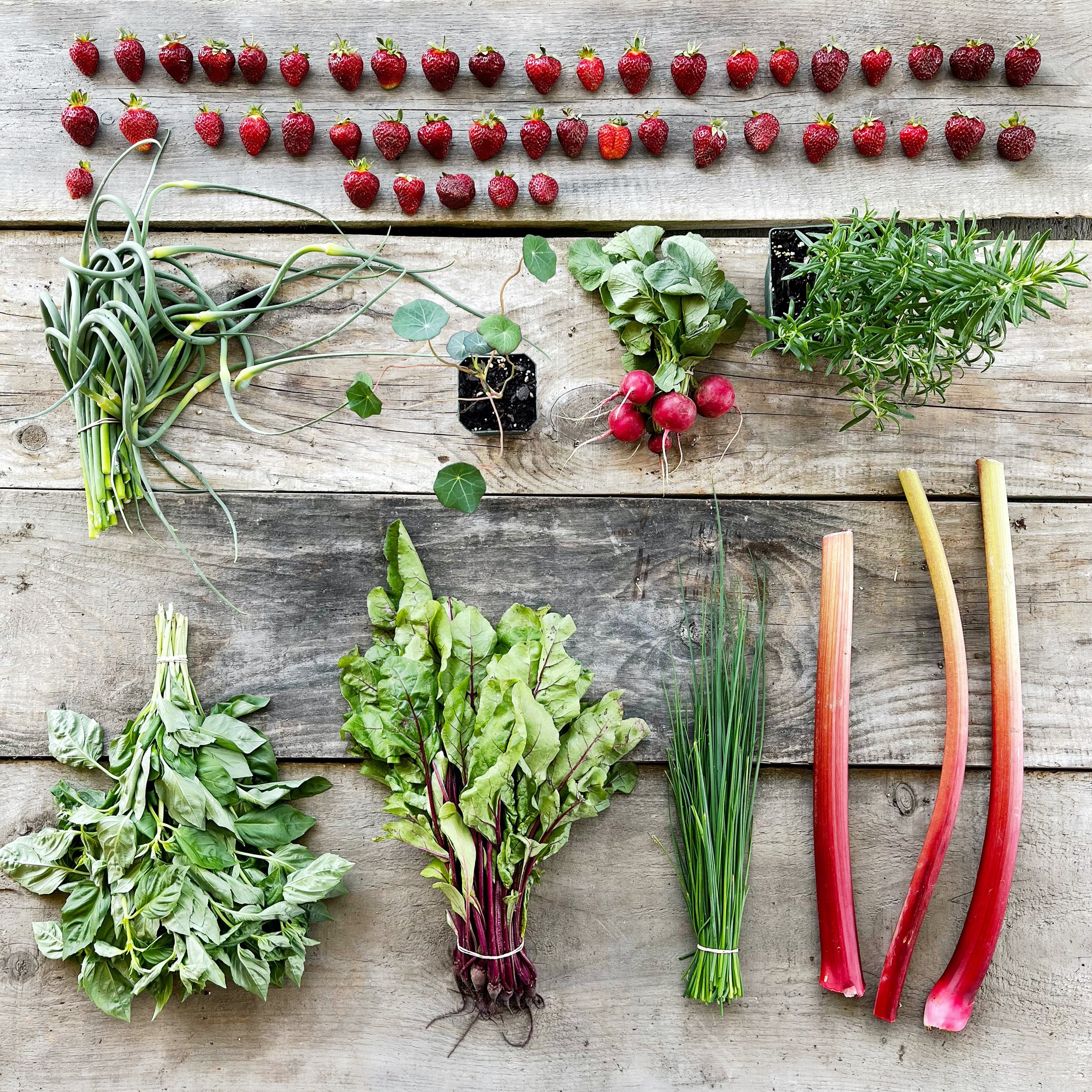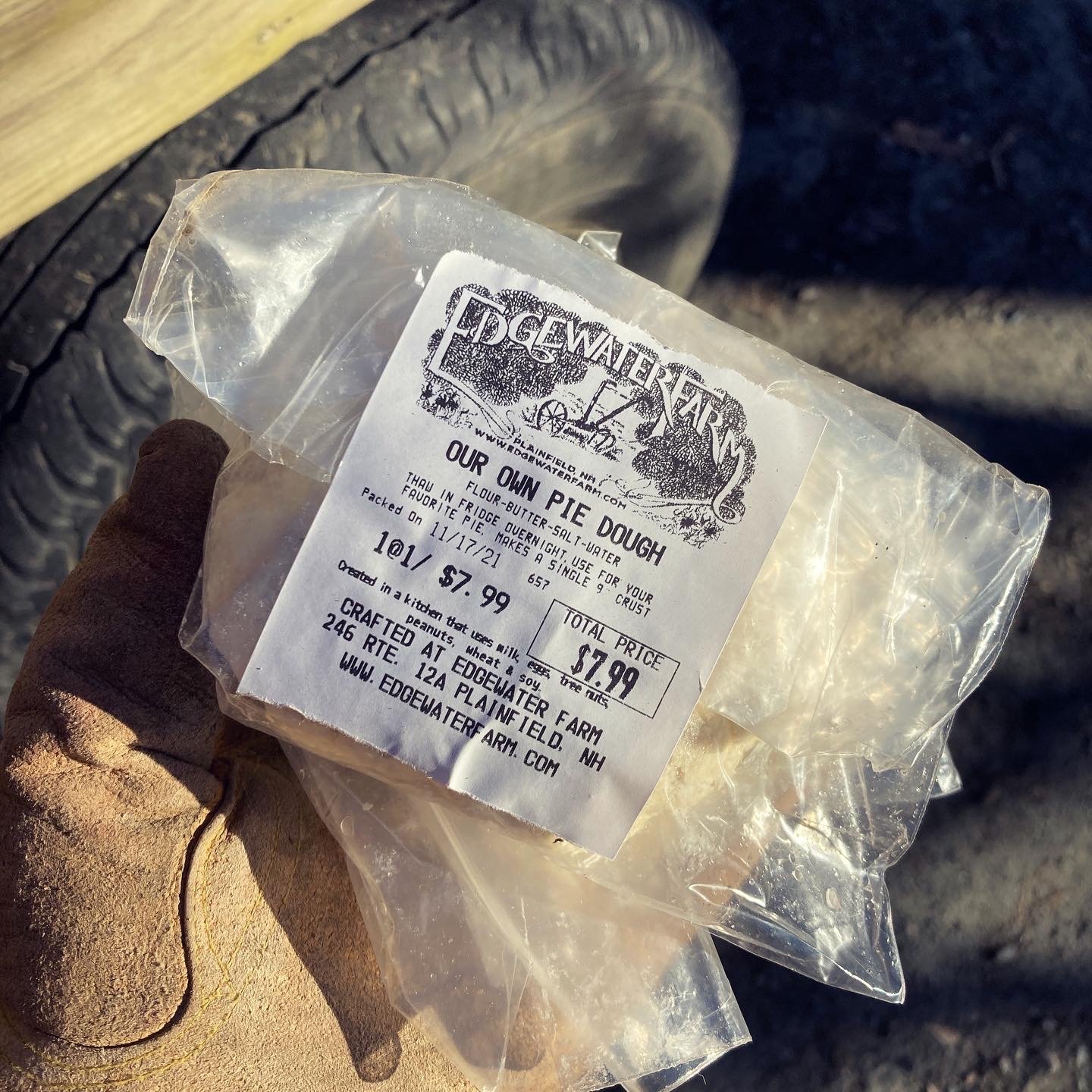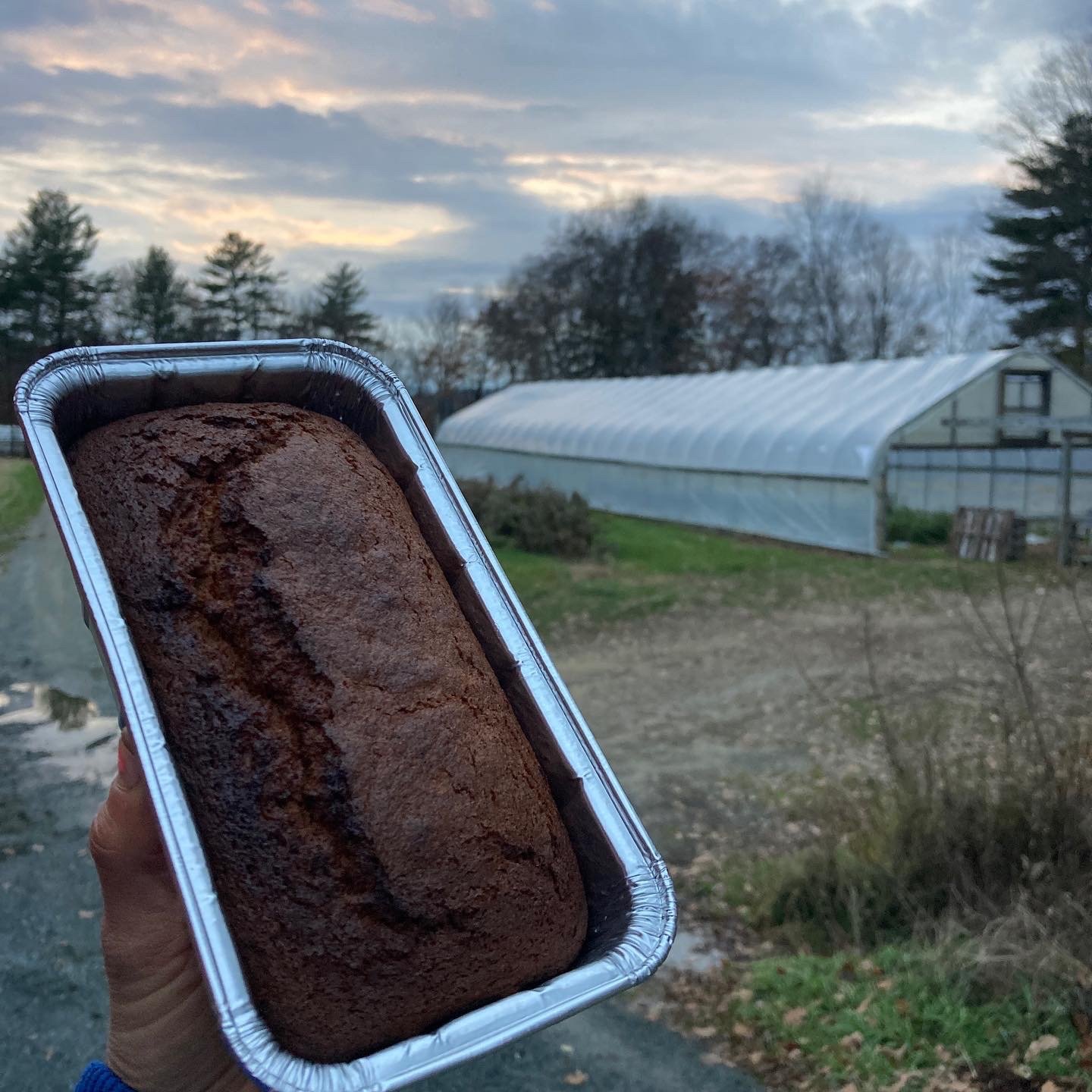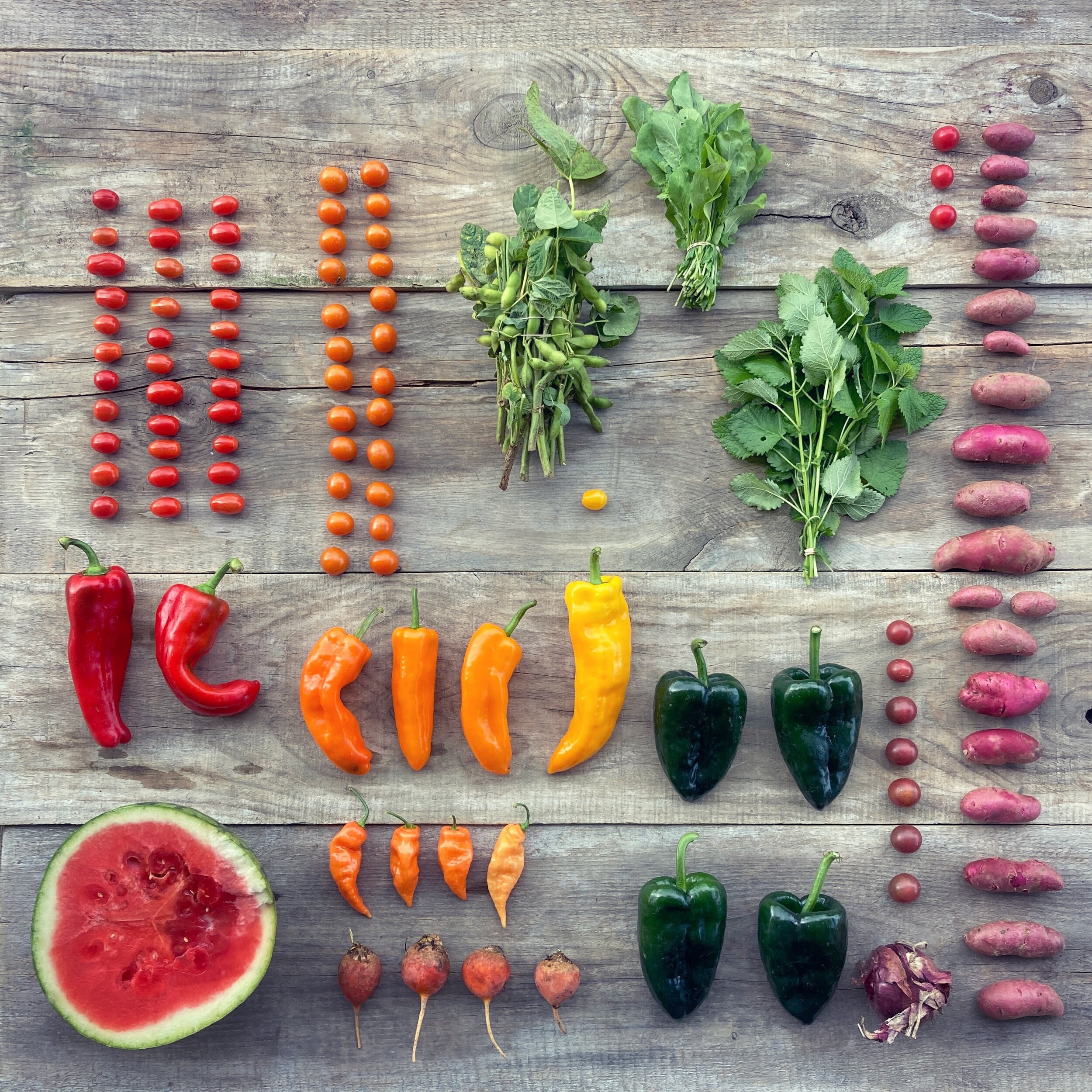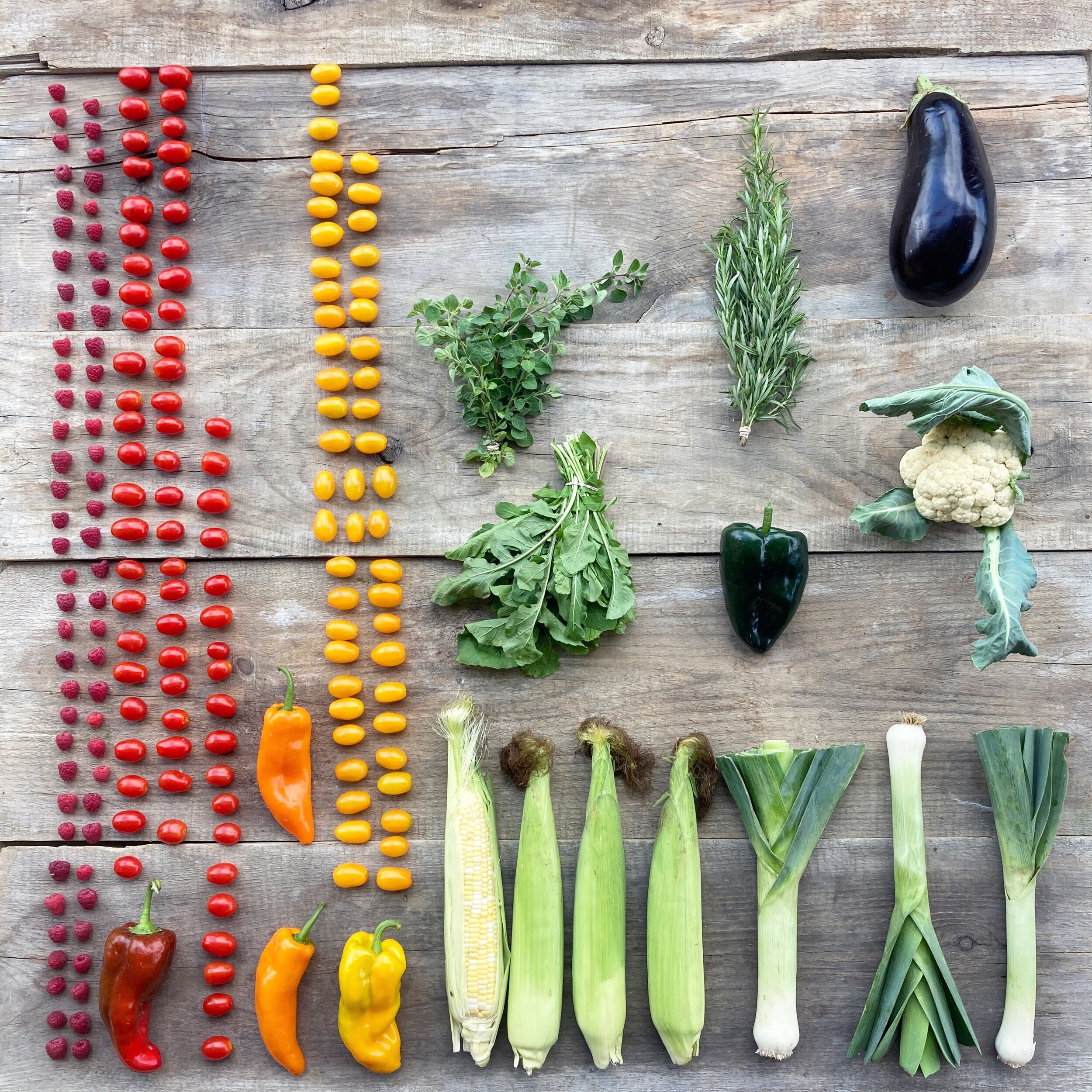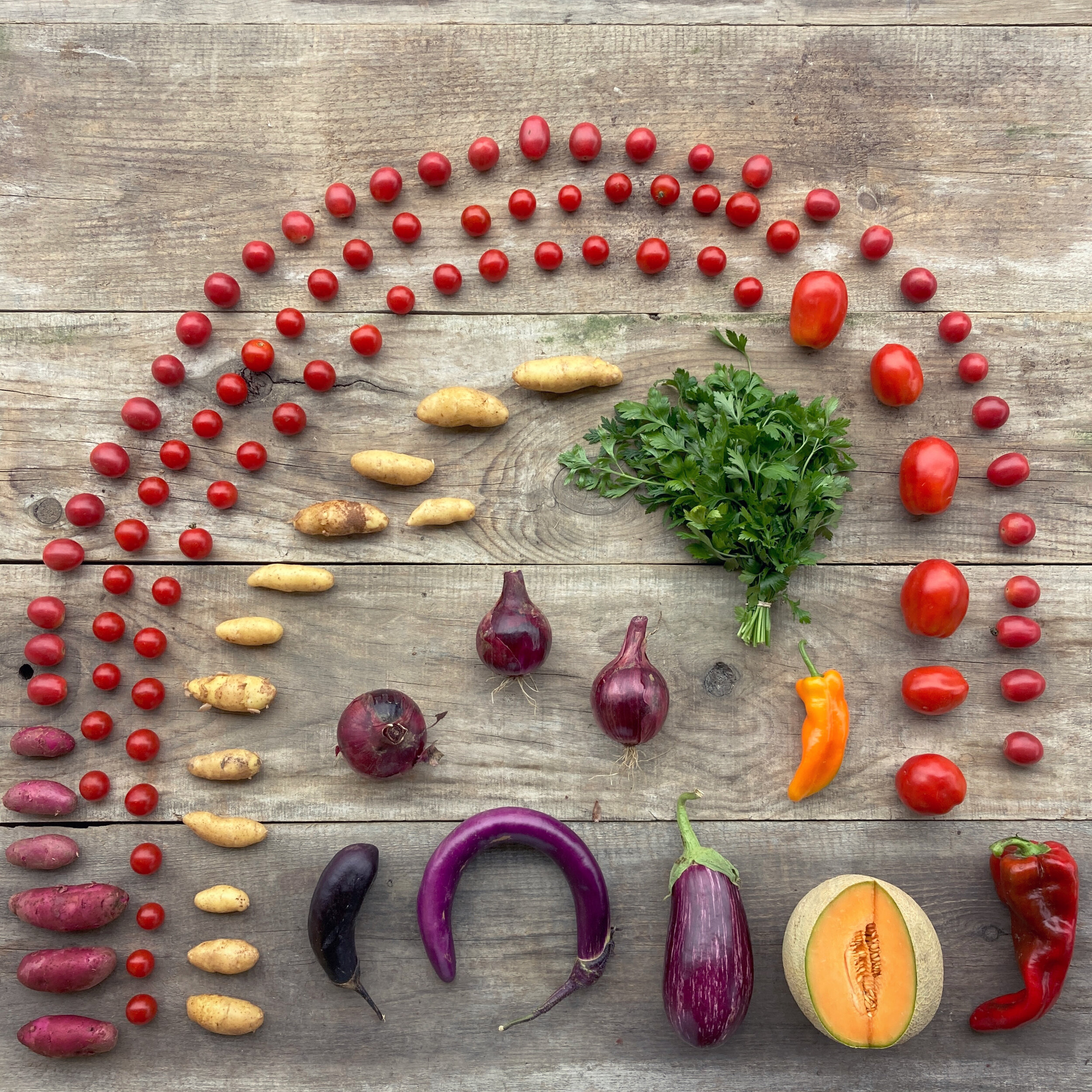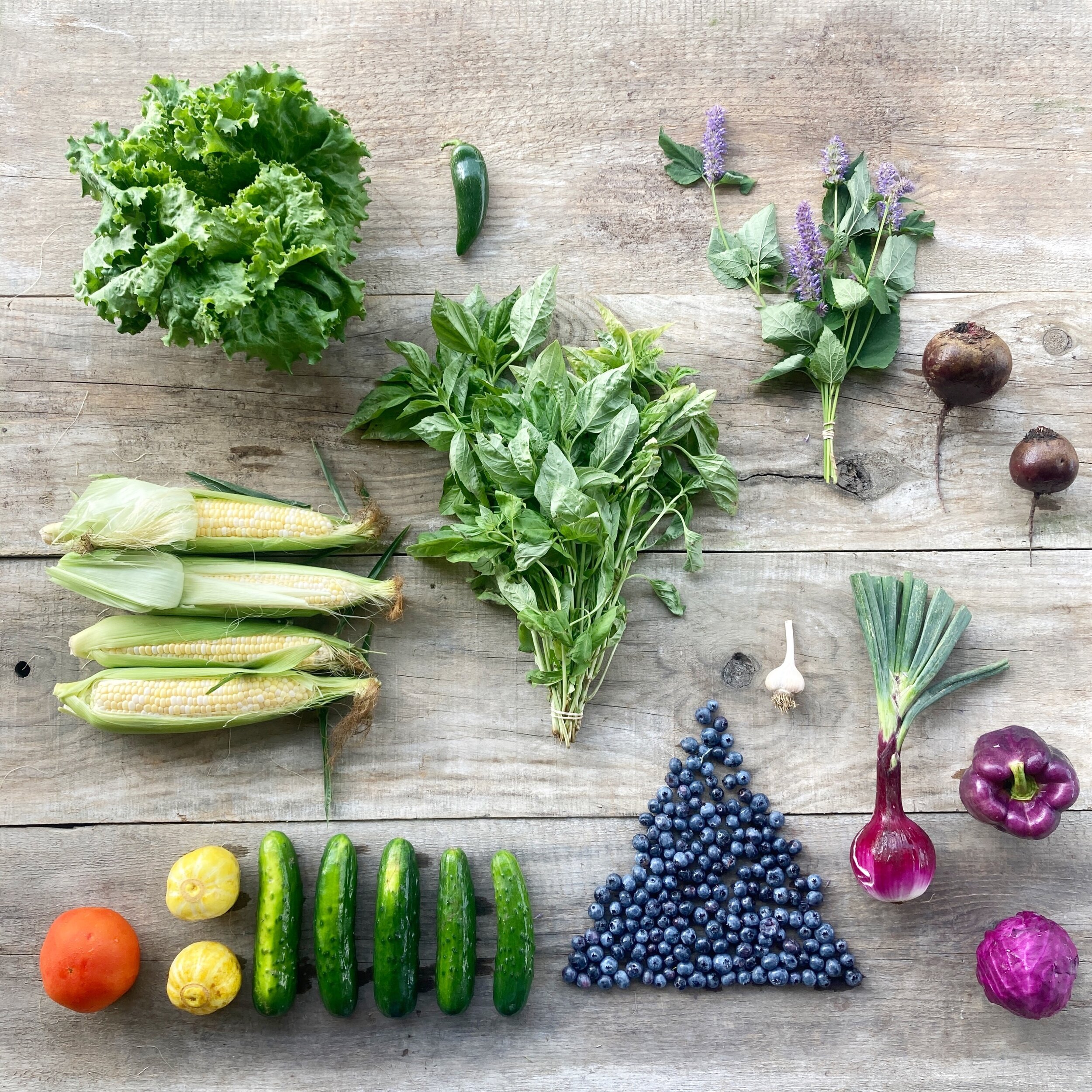Pooh Sprague (original farmer at Edgewater with wife and fastest bean picker Anne) infrequently updates a blog on our website -Pooh’s Corner- that offers his seasonal farming perspective etc… he posted this on Tuesday (September 14th), just in time for the CSA newsletter, thought yall might like checking in on Pooh’s thoughts…
PRO-TIPS:
Shishitooooosssss!! You know what to do, but if you have forgotten: bring these peps right to your pan or grill, shmear in olive oil and fry or grill until popped and blistered. Salt and Devour immediately
FOR NOTES ON LEMONGRASS AND HOW TO USE:
Scroll back to week 10 and read up on all things lemongrass.
BUT FOR MY FAVORITE THING TO DO WITH LEMONGRASS, SEE:
TOM KHA SOUP (Thai coconut chicken soup with chicken, mushroom and coconut milk)
8 oz. (226 g) boneless and skinless chicken, breast or thighs, cut into strips or thin pieces
20 canned straw mushrooms
1 1/2 cups coconut milk
1 cup water
1 stalk lemongrass, cut into 3-inch lengths and pounded
6 kaffir lime leaves , lightly bruised to release the flavor
6 slices galangal
8 bird's eye chilies, lightly pounded
3 tablespoons fish sauce
2 1/2 tablespoons lime juice or to taste
1 tablespoon chopped cilantro
Add water, lemongrass, galangal, chilies, kaffir lime leaves into a pot and bring it to boil. Add straw mushrooms and chicken and boil it on medium heat for a few minutes or until the chicken is cooked through. Add coconut milk and boil for a couple more minutes. Turn off the heat and add lime juice and fish sauce to taste. Add chopped cilantro before serving.
If you can't find galangal, do not use ginger. Ginger is not the substitute for galangal. "Tom Kha" means galangal in Thai. However, if you absolutely can't find galangal and still wish to make this because you love this soup so much, just make it without galangal.
https://rasamalaysia.com/tom-kha-gai-recipe-thai-coconut-chicken-soup/
Spicy eggplant from the burma superstar cook book
Curry style eggplant awesome over rice.
3 Japanese Eggplants, cut into 1-inch cubes (about 6 cups)
1 teaspoon salt
2 ½ tablespoons canola oil
2 cups finely diced yellow onion
3 tablespoons minced garlic
1 tablespoon minced ginger
1-2 Thai chiles, thinly sliced or 2 tablespoons minced jalapeno
1 small dried chile, broken in half, seeds retained
2 teaspoons shrimp paste
½ teaspoon turmeric
½ teaspoon paprika
1 teaspoon fish sauce
Handful of fried garlic chips (for how to on garlic chips: again head to our CSA BLOG and scroll back to CSA week 6)
Cilantro or thai basil sprigs for garnish
1 lime or lemon cut into wedges for garnish
Season the eggplant with salt and scatter onto a clean dish towel. Let it sit while you prepare the remaining ingredients, at least 10 minutes. Once the eggplant begins to bead with water, wrap the towel lightly and squeeze to remove excess liquid from the eggplant.
In a wok or pot, heat 1 tablespoon of the oil over medium-high heat. Add the eggplant, lower the heat to medium, and cook, stirring often, until the eggplant begins to soften, about 4 minutes. Using a slotted spoon, scoop out the eggplant and transfer to a plate.
Heat the remaining 1 ½ tablespoons of oil in the wok. Add the onions and cook over medium-low heat, stirring often to prevent scorching, until softened, about 4 minutes. Stir in the garlic, ginger, fresh and fried chiles, and shrimp paste and cook until the onions are completely soft and starting to turn golden, 3 more minutes.
Add the turmeric and paprika and then stir in the eggplant and about ½ cup of water. Lower to a gentle simmer and cook, stirring occasionally, until the eggplant is very soft and most of the water has evaporated, about 5 minutes. Season with fish sauce, adding more for a saltier flavor, and squeeze a wedge or two of lime over the top. Serve in a bowl and top with cilantro (and or thai basil!). Offer extra lime wedges along side.
The 7th Inning Stretch September 14, 2021: We are approaching mid September here. School is back in session and as if that weren’t a wake-up call, we are staring down the ultimate harbinger of fall with the arrival of the World’s Fair in Tunbridge, VT. Surely the days will start getting much shorter now, and we often remark about it. We will see the breaking out of sweatshirts, neoprene picking gloves, rain gear and wool toques. In their orange rain pants the crew looks like they just came off the boat from the TV series “Deadliest Catch.” As the season winds down, many farmers are licking their seasonal wounds. We are -in farmer terms- “just past the 7th inning stretch” in our seasons, and there is still much to accomplish. This includes a lot of planting and seeding within the greenhouses to serve the late fall CSA. Our onions are gathered up, the first of three plantings of carrots up and in the cooler, and if Mike can find enough parts between our two old potato harvesters to make one functional harvester, we will soon be digging our 6 acres of potatoes. Once that crop is all graded, sized and stored in our barn, we can start washing and shipping them. We can then turn our attention to: cleaning up the place; planting next year’s garlic; readying the strawberries with sprays and mulching for next spring; fixing broken doors and sills in our funky collection of old greenhouses. Then the contracts will expire on the Jamaican crew, and they will head home to tend their own farms by early November. Plenty to do, and seemingly insufficient time and bodies to make it through the list. I have heard the muttering of “I wouldn’t mind a good frost now….” and this time it didn’t come from my lips first. On many farms, the wet July here in the Twin States brought forth an epic surge of weed germination and growth…and Edgewater was no exception. We daily watched the galinsoga engulf the strawberries, with no spare hours available to get in there and clean it out. We are looking for a good frost to freeze it down, leaving the strawberries to bask in the filtering fall sunlight without competition. Fortunately, the strawberry plants are in very good shape, and we are (perhaps foolishly) getting optimistic about our spring prospects. But everyone is busy harvesting and packing out 10 hours a day, and soon the light levels will dictate just how long we will be able to work in the fields. Despite a crop failure with pumpkins and winter squash, we have an almost epic fall raspberries crop. Trying to harvest and move that crop is mopping up a lot of extra hours. In the farmstand we have had to close down on Mondays for the rest of the season, because of a labor shortage, and we have had to reschedule the help we have. Labor shortage or not, our melons,tomatoes, pepper, cut flowers, leeks will be out there for another 4 weeks unless a frost stops them in their steps. Weather continues to be the biggest challenge and unknown for farmers, along with a dearth of local labor. Our season started hot and droughty from the end of March until the end of June. It was abnormally hot for so early in the growing season, and that created some minor problems in the greenhouses, but there was a non-stop 10-15 mph breeze or wind that just never abated. I felt like we were trying to farm in Pueblo, Colorado. The lack of rain was tough enough, but the constant wind withered and devastated transplanted crops. Then, the weather changed, and in 20 minutes we got an inch of rain, and it then continued to rain off and on for a month. A lot of disease showed up, so we were confronted with trading one extreme problem for another. However, August turned up benignly normal, and with adequate moisture the potatoes sized up and the field tomatoes and melons kicked into gear. We have been challenged, but thus far undamaged, by hurricanes. Many of my seacoast friends prepared for the worst wind event they hoped never to see. Weather models were in constant flux for us here in the Upper Valley. On the Saturday that Hurricane Ida was making landfall on Long Island, the forecast for us from the National Oceanic and Atmospheric Administration was calling for a range of 2-12” of rain. I understand that weather forecasting is not an exact science, but for me there is a big difference in the amount that 2” dumps and what 12 “ would look like. At two inches I would get the tractor bucket out after the storm passes, and do a little touch-up work on our gravel roads and driveways. After twelve inches in so few hours I would be knee-deep in insurance claims, as well as sleeping and cooking meals in our farmstand….for a long time, too. What did we really get in the end? In what was forecast to be the middle of the storm, I went out and mowed my lawn. And I could not have been happier to be doing so. Fall will always be a great season to me. There is plenty of natural color in the pumpkins, ornamental corn, and chrysanthemums as well as on the trees in the woods. The warmth in this season is welcome, as opposed to the intense sun and heat of summer. Fall crops roll into the pack house: beets, potatoes, turnip, carrots. Onions, garlic, leeks and cabbage. When it's cold, we can add a couple of thin layers of clothes to keep warm until the sun burns through the fall fogs and warms us. Migratory birds come and go, and soon we will start to lure the songbirds to the birdfeeders. In deep fall, the woodstove starts to operate with greater frequency. Then one day in November, it (the woodstove) will start its full time nonstop operation until late April, when the sun once more strengthens its grip on us all.
PRO-TIPS:
Shishitooooosssss!! You know what to do, but if you have forgotten: bring these peps right to your pan or grill, shmear in olive oil and fry or grill until popped and blistered. Salt and Devour immediately
FOR NOTES ON LEMONGRASS AND HOW TO USE: head to the CSA blog - yes! Did you know that these newsletters get posted weekly on our web page? https://www.edgewaterfarm.com/csa-blog…
Scroll back to week 10 and read up on all things lemongrass.
BUT FOR MY FAVORITE THING TO DO WITH LEMONGRASS, SEE:
TOM KHA SOUP (Thai coconut chicken soup with chicken, mushroom and coconut milk)
8 oz. (226 g) boneless and skinless chicken, breast or thighs, cut into strips or thin pieces
20 canned straw mushrooms
1 1/2 cups coconut milk
1 cup water
1 stalk lemongrass, cut into 3-inch lengths and pounded
6 kaffir lime leaves , lightly bruised to release the flavor
6 slices galangal
8 bird's eye chilies, lightly pounded
3 tablespoons fish sauce
2 1/2 tablespoons lime juice or to taste
1 tablespoon chopped cilantro
Add water, lemongrass, galangal, chilies, kaffir lime leaves into a pot and bring it to boil. Add straw mushrooms and chicken and boil it on medium heat for a few minutes or until the chicken is cooked through. Add coconut milk and boil for a couple more minutes. Turn off the heat and add lime juice and fish sauce to taste. Add chopped cilantro before serving.
If you can't find galangal, do not use ginger. Ginger is not the substitute for galangal. "Tom Kha" means galangal in Thai. However, if you absolutely can't find galangal and still wish to make this because you love this soup so much, just make it without galangal.
https://rasamalaysia.com/tom-kha-gai-recipe-thai-coconut-chicken-soup/
Spicy eggplant from the burma superstar cook book
Curry style eggplant awesome over rice.
3 Japanese Eggplants, cut into 1-inch cubes (about 6 cups)
1 teaspoon salt
2 ½ tablespoons canola oil
2 cups finely diced yellow onion
3 tablespoons minced garlic
1 tablespoon minced ginger
1-2 Thai chiles, thinly sliced or 2 tablespoons minced jalapeno
1 small dried chile, broken in half, seeds retained
2 teaspoons shrimp paste
½ teaspoon turmeric
½ teaspoon paprika
1 teaspoon fish sauce
Handful of fried garlic chips (for how to on garlic chips: again head to our CSA BLOG and scroll back to CSA week 6)
Cilantro or thai basil sprigs for garnish
1 lime or lemon cut into wedges for garnish
Season the eggplant with salt and scatter onto a clean dish towel. Let it sit while you prepare the remaining ingredients, at least 10 minutes. Once the eggplant begins to bead with water, wrap the towel lightly and squeeze to remove excess liquid from the eggplant.
In a wok or pot, heat 1 tablespoon of the oil over medium-high heat. Add the eggplant, lower the heat to medium, and cook, stirring often, until the eggplant begins to soften, about 4 minutes. Using a slotted spoon, scoop out the eggplant and transfer to a plate.
Heat the remaining 1 ½ tablespoons of oil in the wok. Add the onions and cook over medium-low heat, stirring often to prevent scorching, until softened, about 4 minutes. Stir in the garlic, ginger, fresh and fried chiles, and shrimp paste and cook until the onions are completely soft and starting to turn golden, 3 more minutes.
Add the turmeric and paprika and then stir in the eggplant and about ½ cup of water. Lower to a gentle simmer and cook, stirring occasionally, until the eggplant is very soft and most of the water has evaporated, about 5 minutes. Season with fish sauce, adding more for a saltier flavor, and squeeze a wedge or two of lime over the top. Serve in a bowl and top with cilantro (and or thai basil!). Offer extra lime wedges along side.
The 7th Inning Stretch September 14, 2021: We are approaching mid September here. School is back in session and as if that weren’t a wake-up call, we are staring down the ultimate harbinger of fall with the arrival of the World’s Fair in Tunbridge, VT. Surely the days will start getting much shorter now, and we often remark about it. We will see the breaking out of sweatshirts, neoprene picking gloves, rain gear and wool toques. In their orange rain pants the crew looks like they just came off the boat from the TV series “Deadliest Catch.” As the season winds down, many farmers are licking their seasonal wounds. We are -in farmer terms- “just past the 7th inning stretch” in our seasons, and there is still much to accomplish. This includes a lot of planting and seeding within the greenhouses to serve the late fall CSA. Our onions are gathered up, the first of three plantings of carrots up and in the cooler, and if Mike can find enough parts between our two old potato harvesters to make one functional harvester, we will soon be digging our 6 acres of potatoes. Once that crop is all graded, sized and stored in our barn, we can start washing and shipping them. We can then turn our attention to: cleaning up the place; planting next year’s garlic; readying the strawberries with sprays and mulching for next spring; fixing broken doors and sills in our funky collection of old greenhouses. Then the contracts will expire on the Jamaican crew, and they will head home to tend their own farms by early November. Plenty to do, and seemingly insufficient time and bodies to make it through the list. I have heard the muttering of “I wouldn’t mind a good frost now….” and this time it didn’t come from my lips first. On many farms, the wet July here in the Twin States brought forth an epic surge of weed germination and growth…and Edgewater was no exception. We daily watched the galinsoga engulf the strawberries, with no spare hours available to get in there and clean it out. We are looking for a good frost to freeze it down, leaving the strawberries to bask in the filtering fall sunlight without competition. Fortunately, the strawberry plants are in very good shape, and we are (perhaps foolishly) getting optimistic about our spring prospects. But everyone is busy harvesting and packing out 10 hours a day, and soon the light levels will dictate just how long we will be able to work in the fields. Despite a crop failure with pumpkins and winter squash, we have an almost epic fall raspberries crop. Trying to harvest and move that crop is mopping up a lot of extra hours. In the farmstand we have had to close down on Mondays for the rest of the season, because of a labor shortage, and we have had to reschedule the help we have. Labor shortage or not, our melons,tomatoes, pepper, cut flowers, leeks will be out there for another 4 weeks unless a frost stops them in their steps. Weather continues to be the biggest challenge and unknown for farmers, along with a dearth of local labor. Our season started hot and droughty from the end of March until the end of June. It was abnormally hot for so early in the growing season, and that created some minor problems in the greenhouses, but there was a non-stop 10-15 mph breeze or wind that just never abated. I felt like we were trying to farm in Pueblo, Colorado. The lack of rain was tough enough, but the constant wind withered and devastated transplanted crops. Then, the weather changed, and in 20 minutes we got an inch of rain, and it then continued to rain off and on for a month. A lot of disease showed up, so we were confronted with trading one extreme problem for another. However, August turned up benignly normal, and with adequate moisture the potatoes sized up and the field tomatoes and melons kicked into gear. We have been challenged, but thus far undamaged, by hurricanes. Many of my seacoast friends prepared for the worst wind event they hoped never to see. Weather models were in constant flux for us here in the Upper Valley. On the Saturday that Hurricane Ida was making landfall on Long Island, the forecast for us from the National Oceanic and Atmospheric Administration was calling for a range of 2-12” of rain. I understand that weather forecasting is not an exact science, but for me there is a big difference in the amount that 2” dumps and what 12 “ would look like. At two inches I would get the tractor bucket out after the storm passes, and do a little touch-up work on our gravel roads and driveways. After twelve inches in so few hours I would be knee-deep in insurance claims, as well as sleeping and cooking meals in our farmstand….for a long time, too. What did we really get in the end? In what was forecast to be the middle of the storm, I went out and mowed my lawn. And I could not have been happier to be doing so. Fall will always be a great season to me. There is plenty of natural color in the pumpkins, ornamental corn, and chrysanthemums as well as on the trees in the woods. The warmth in this season is welcome, as opposed to the intense sun and heat of summer. Fall crops roll into the pack house: beets, potatoes, turnip, carrots. Onions, garlic, leeks and cabbage. When it's cold, we can add a couple of thin layers of clothes to keep warm until the sun burns through the fall fogs and warms us. Migratory birds come and go, and soon we will start to lure the songbirds to the birdfeeders. In deep fall, the woodstove starts to operate with greater frequency. Then one day in November, it (the woodstove) will start its full time nonstop operation until late April, when the sun once more strengthens its grip on us all.
PRO-TIPS:
Shishitooooosssss!! You know what to do, but if you have forgotten: bring these peps right to your pan or grill, shmear in olive oil and fry or grill until popped and blistered. Salt and Devour immediately
FOR NOTES ON LEMONGRASS AND HOW TO USE: head to the CSA blog - yes! Did you know that these newsletters get posted weekly on our web page? https://www.edgewaterfarm.com/csa-blog…
Scroll back to week 10 and read up on all things lemongrass.
BUT FOR MY FAVORITE THING TO DO WITH LEMONGRASS, SEE:
TOM KHA SOUP (Thai coconut chicken soup with chicken, mushroom and coconut milk)
8 oz. (226 g) boneless and skinless chicken, breast or thighs, cut into strips or thin pieces
20 canned straw mushrooms
1 1/2 cups coconut milk
1 cup water
1 stalk lemongrass, cut into 3-inch lengths and pounded
6 kaffir lime leaves , lightly bruised to release the flavor
6 slices galangal
8 bird's eye chilies, lightly pounded
3 tablespoons fish sauce
2 1/2 tablespoons lime juice or to taste
1 tablespoon chopped cilantro
Add water, lemongrass, galangal, chilies, kaffir lime leaves into a pot and bring it to boil. Add straw mushrooms and chicken and boil it on medium heat for a few minutes or until the chicken is cooked through. Add coconut milk and boil for a couple more minutes. Turn off the heat and add lime juice and fish sauce to taste. Add chopped cilantro before serving.
If you can't find galangal, do not use ginger. Ginger is not the substitute for galangal. "Tom Kha" means galangal in Thai. However, if you absolutely can't find galangal and still wish to make this because you love this soup so much, just make it without galangal.
https://rasamalaysia.com/tom-kha-gai-recipe-thai-coconut-chicken-soup/
Spicy eggplant from the burma superstar cook book
Curry style eggplant awesome over rice.
3 Japanese Eggplants, cut into 1-inch cubes (about 6 cups)
1 teaspoon salt
2 ½ tablespoons canola oil
2 cups finely diced yellow onion
3 tablespoons minced garlic
1 tablespoon minced ginger
1-2 Thai chiles, thinly sliced or 2 tablespoons minced jalapeno
1 small dried chile, broken in half, seeds retained
2 teaspoons shrimp paste
½ teaspoon turmeric
½ teaspoon paprika
1 teaspoon fish sauce
Handful of fried garlic chips (for how to on garlic chips: again head to our CSA BLOG and scroll back to CSA week 6)
Cilantro or thai basil sprigs for garnish
1 lime or lemon cut into wedges for garnish
Season the eggplant with salt and scatter onto a clean dish towel. Let it sit while you prepare the remaining ingredients, at least 10 minutes. Once the eggplant begins to bead with water, wrap the towel lightly and squeeze to remove excess liquid from the eggplant.
In a wok or pot, heat 1 tablespoon of the oil over medium-high heat. Add the eggplant, lower the heat to medium, and cook, stirring often, until the eggplant begins to soften, about 4 minutes. Using a slotted spoon, scoop out the eggplant and transfer to a plate.
Heat the remaining 1 ½ tablespoons of oil in the wok. Add the onions and cook over medium-low heat, stirring often to prevent scorching, until softened, about 4 minutes. Stir in the garlic, ginger, fresh and fried chiles, and shrimp paste and cook until the onions are completely soft and starting to turn golden, 3 more minutes.
Add the turmeric and paprika and then stir in the eggplant and about ½ cup of water. Lower to a gentle simmer and cook, stirring occasionally, until the eggplant is very soft and most of the water has evaporated, about 5 minutes. Season with fish sauce, adding more for a saltier flavor, and squeeze a wedge or two of lime over the top. Serve in a bowl and top with cilantro (and or thai basil!). Offer extra lime wedges along side.



